Types of EMG Textile Electrodes: A Comparative Study Using PCA †
Abstract
1. Introduction
2. Materials and Methods
2.1. Human Subject Testing
2.2. EMG Feature Extraction
2.3. Principal Component Analysis (PCA)
3. Results
3.1. EMG Signal Acquired Using Textile Electrodes
3.2. Pre-Processing
4. Discussion
5. Conclusions
Author Contributions
Funding
Institutional Review Board Statement
Informed Consent Statement
Data Availability Statement
Acknowledgments
Conflicts of Interest
References
- Albulbul, A. Evaluating Major Electrode Types for Idle Biological Signal Measurements for Modern Medical Technology. Bioengineering 2016, 3, 20. [Google Scholar] [CrossRef] [PubMed]
- Ankhili, A.; Tao, X.; Cochrane, C.; Koncar, V.; Coulon, D.; Tarlet, J.-M. Comparative Study on Conductive Knitted Fabric Electrodes for Long-Term Electrocardiography Monitoring: Silver-Plated and PEDOT:PSS Coated Fabrics. Sensors 2018, 18, 3890. [Google Scholar] [CrossRef] [PubMed]
- Moloney, P.B.; Lefter, S.; Ryan, A.M.; Jansen, M.; Bermingham, N.; McNamara, B. The Diagnostic Yield of Electromyography at Detecting Abnormalities on Muscle Biopsy: A Single Center Experience. Neurodiagn. J. 2021, 61, 86–94. [Google Scholar] [CrossRef] [PubMed]
- Perego, P.; Taherinejad, N.; Caon, M. (Eds.) Wearables in Healthcare: Second EAI International Conference, HealthWear 2020, Virtual Event, December 10–11, 2020: Proceedings; Lecture notes of the Institute for Computer Sciences, Social Informatics and Telecommunications Engineering; Springer: Cham, Switzerland, 2021; ISBN 978-3-030-76066-3. [Google Scholar]
- Analia, R.; Sulistyo, V.A.; Iglesias, T.M.; Susanto; Pamungkas, D.S.; Jamzuri, E.R. The Reusable Electrode of EMG Sensor for Capturing The Calf Muscle Activities. In Proceedings of the 2020 3rd International Conference on Applied Engineering (ICAE), Batam, Indonesia, 7 October 2020; IEEE: Manhattan, NY, USA, 2020; pp. 1–4. [Google Scholar]
- Cerone, G.L.; Botter, A.; Vieira, T.; Gazzoni, M. Design and Characterization of a Textile Electrode System for the Detection of High-Density SEMG. IEEE Trans. Neural Syst. Rehabil. Eng. 2021, 29, 1110–1119. [Google Scholar] [CrossRef] [PubMed]
- da Fonseca, P.F.P.; Borgonovo-Santos, M.; Catarino, A.; Correia, M.V.; Vilas-Boas, J.P. Characterization of Textile Electrodes for EMG Measurements: Impedance and Signal Morphology. Corpoconsciência 2021, 25, 221–235. [Google Scholar] [CrossRef]
- Kamavuako, E.N.; Brown, M.; Bao, X.; Chihi, I.; Pitou, S.; Howard, M. Affordable Embroidered EMG Electrodes for Myoelectric Control of Prostheses: A Pilot Study. Sensors 2021, 21, 5245. [Google Scholar] [CrossRef] [PubMed]
- Kim, S.; Lee, S.; Jeong, W. EMG Measurement with Textile-Based Electrodes in Different Electrode Sizes and Clothing Pressures for Smart Clothing Design Optimization. Polymers 2020, 12, 2406. [Google Scholar] [CrossRef] [PubMed]
- Hermann, A.; Senner, V. EMG-Pants in Sports: Concept Validation of Textile-Integrated EMG Measurements. In Proceedings of the 8th International Conference on Sport Sciences Research and Technology Support, Budapest, Hungary, 5–6 November 2020; SCITEPRESS-Science and Technology Publications: Budapest, Hungary, 2020; pp. 197–204. [Google Scholar]
- Guvenc Tuna, B.; Goncu-Berk, G. Understanding the Effect of Clothing Pattern on E-Textile Electromyography (EMG) Electrode Performance. In Pivoting for the Pandemic; Iowa State University Digital Press: Ames, IA, USA, 2020. [Google Scholar] [CrossRef]
- Ehrmann, G.; Ehrmann, A. Electronic Textiles. Encyclopedia 2021, 1, 115–130. [Google Scholar] [CrossRef]
- Paiva, A.; Carvalho, H.; Catarino, A.; Postolache, O.; Postolache, G. Development of Dry Textile Electrodes for Electromiography a Comparison between Knitted Structures and Conductive Yarns. In Proceedings of the 2015 9th International Conference on Sensing Technology (ICST), Auckland, New Zealand, 8–10 December 2015; IEEE: Manhattan, NY, USA, 2015; pp. 447–451. [Google Scholar]
- Vojtech, L.; Neruda, M.; Reichl, T.; Dusek, K.; de la Torre Megías, C. Surface Area Evaluation of Electrically Conductive Polymer-Based Textiles. Materials 2018, 11, 1931. [Google Scholar] [CrossRef] [PubMed]
- Tseghai, G.B.; Malengier, B.; Nigusse, A.B.; Langenhove, L.V. Development and Evaluation of Resistive Pressure Sensors from Electro-Conductive Textile Fabric. In Second International Forum on Textiles for Graduate Students; Tianjin Polytechnic University: Tianjin, China, 2018. [Google Scholar]
- Spiewak, C. A Comprehensive Study on EMG Feature Extraction and Classifiers. Open Access J. Biomed. Eng. Biosci. 2018, 1, 17–26. [Google Scholar] [CrossRef]
- Sumner, B.; Mancuso, C.; Paradiso, R. Performances Evaluation of Textile Electrodes for EMG Remote Measurements. In Proceedings of the 2013 35th Annual International Conference of the IEEE Engineering in Medicine and Biology Society (EMBC), Osaka, Japan, 3–7 July 2013; IEEE: Manhattan, NY, USA, 2013; pp. 6510–6513. [Google Scholar]
- Ozturk, O.; Yapici, M.K. Surface Electromyography With Wearable Graphene Textiles. IEEE Sensors J. 2021, 21, 14397–14406. [Google Scholar] [CrossRef]
- Hermens, H.J. Development of Recommendations for SEMG Sensors and Sensor Placement Procedures. J. Electromyogr. Kinesiol. 2000, 10, 361–374. [Google Scholar] [CrossRef] [PubMed]
- Shafti, A.; Manero, R.B.R.; Borg, A.M.; Althoefer, K.; Howard, M.J. Embroidered Electromyography: A Systematic Design Guide. IEEE Trans. Neural Syst. Rehabil. Eng. 2016, 25, 4320. [Google Scholar] [CrossRef] [PubMed]
- An, X.; Tangsirinaruenart, O.; Stylios, G.K. Investigating the Performance of Dry Textile Electrodes for Wearable End-Uses. J. Text. Inst. 2019, 110, 151–158. [Google Scholar] [CrossRef]
- Pani, D.; Achilli, A.; Spanu, A.; Bonfiglio, A.; Gazzoni, M.; Botter, A. Validation of Polymer-Based Screen-Printed Textile Electrodes for Surface EMG Detection. IEEE Trans. Neural Syst. Rehabil. Eng. 2019, 27, 1370–1377. [Google Scholar] [CrossRef] [PubMed]
- Pfingst, B.E.; Franck, K.H.; Xu, L.; Bauer, E.M.; Zwolan, T.A. Effects of Electrode Configuration and Place of Stimulation on Speech Perception with Cochlear Prostheses. JARO 2001, 2, 87–103. [Google Scholar] [CrossRef] [PubMed]
- Cömert, A.; Hyttinen, J. A Motion Artifact Generation and Assessment System for the Rapid Testing of Surface Biopotential Electrodes. Physiol. Meas. 2015, 36, 1. [Google Scholar] [CrossRef] [PubMed]
- Leonhardt, S.; Zimmermann, N.; Kranen, P.; Kensche, D.; Muller, E.; Quix, C. Influence of Contact Pressure and Moisture on the Signal Quality of a Newly Developed Textile ECG Sensor Shirt. In Proceedings of the 2008 5th International Summer School and Symposium on Medical Devices and Biosensors, Hong Kong, China, 1–3 June 2008; IEEE: Manhattan, NY, USA, 2008; pp. 256–259. [Google Scholar]
- Gupta, A.; Sayed, T.; Garg, R.; Shreyam, R. Emg Signal Analysis of Healthy and Neuropathic Individuals. IOP Conf. Ser. Mater. Sci. Eng. 2017, 225, 012128. [Google Scholar] [CrossRef]

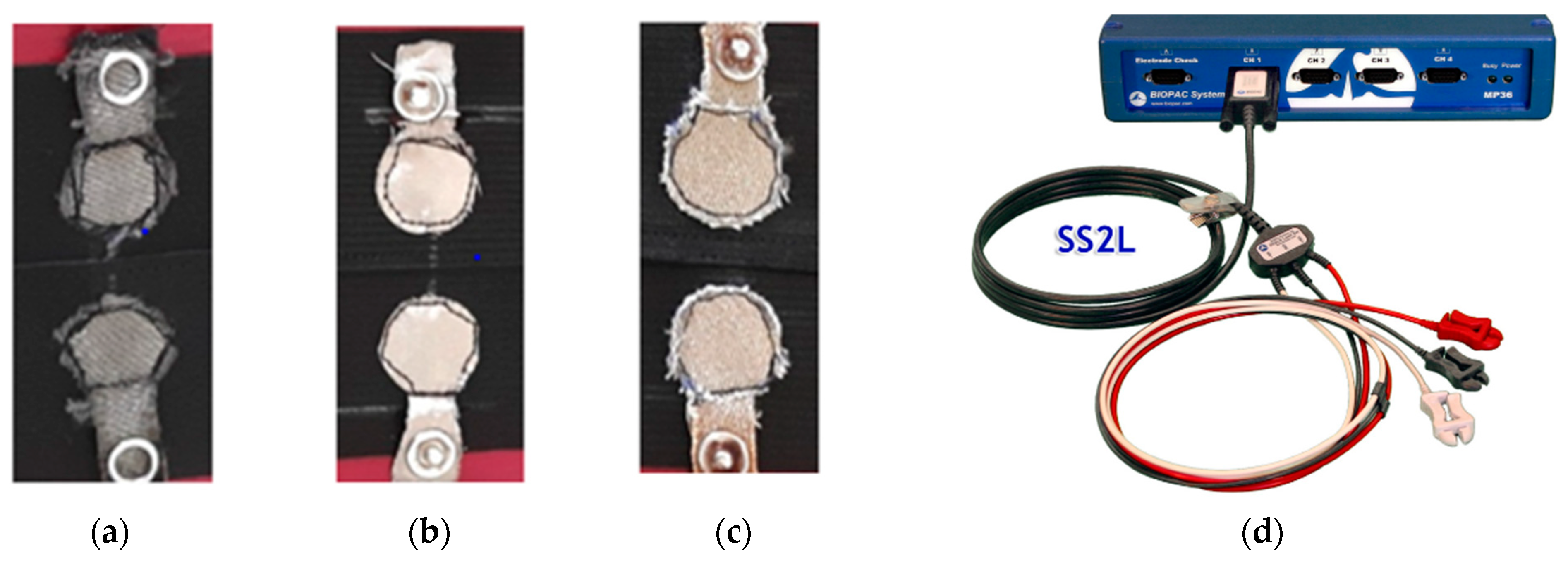
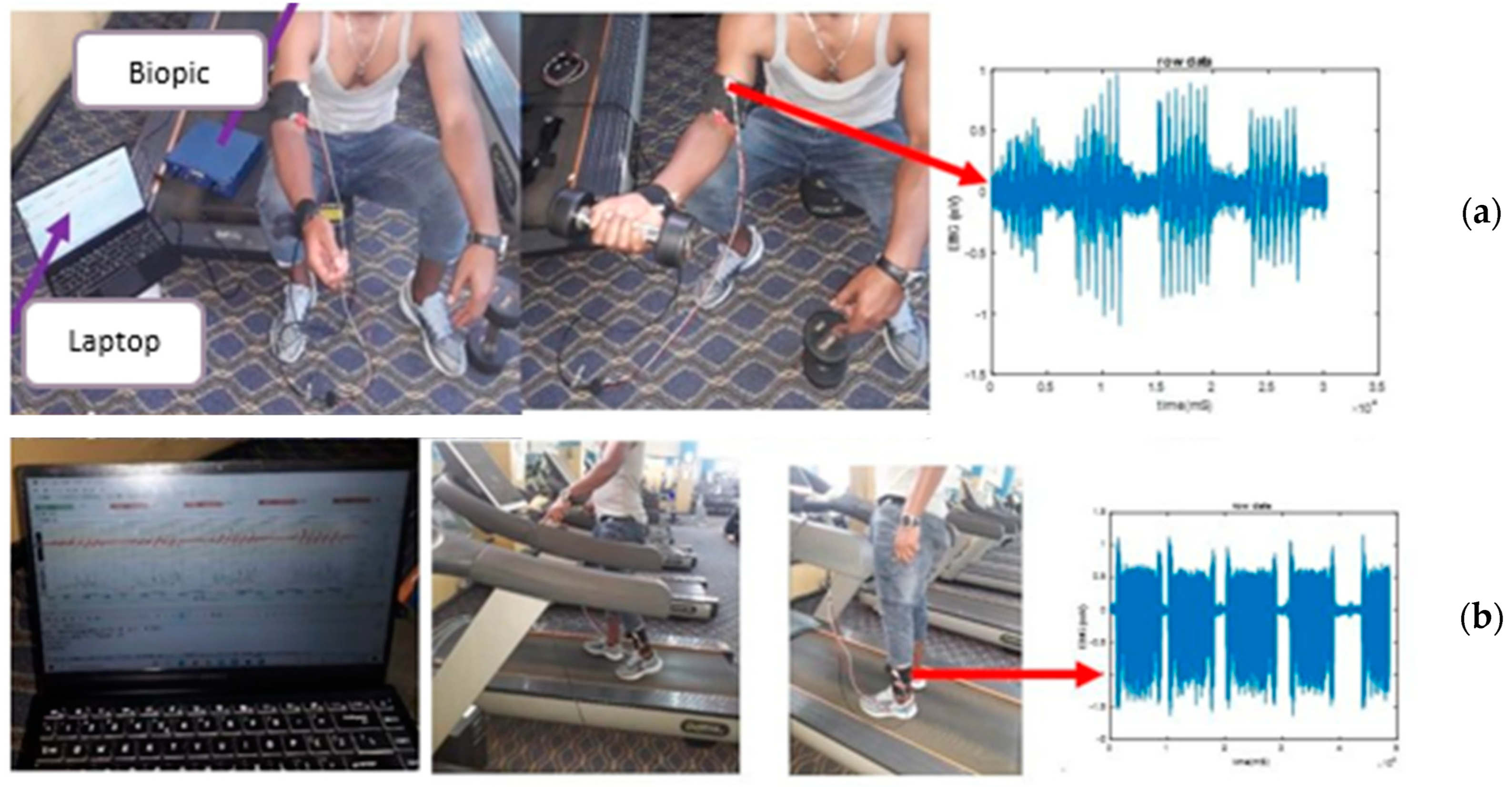
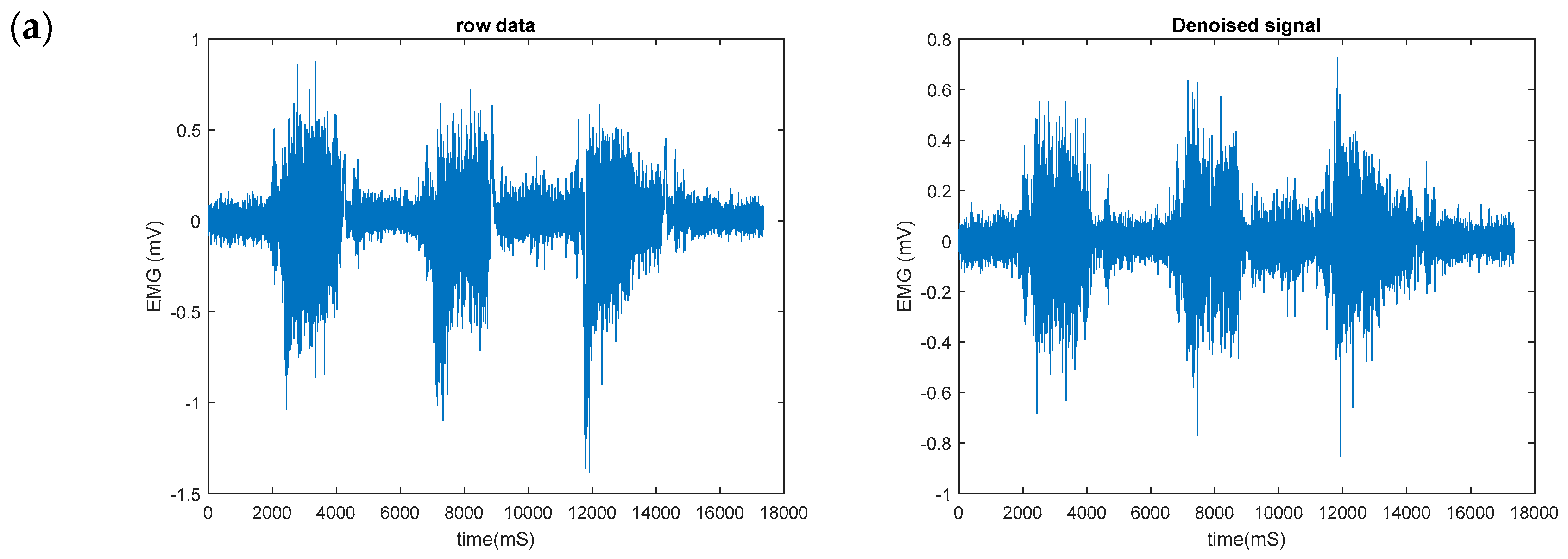
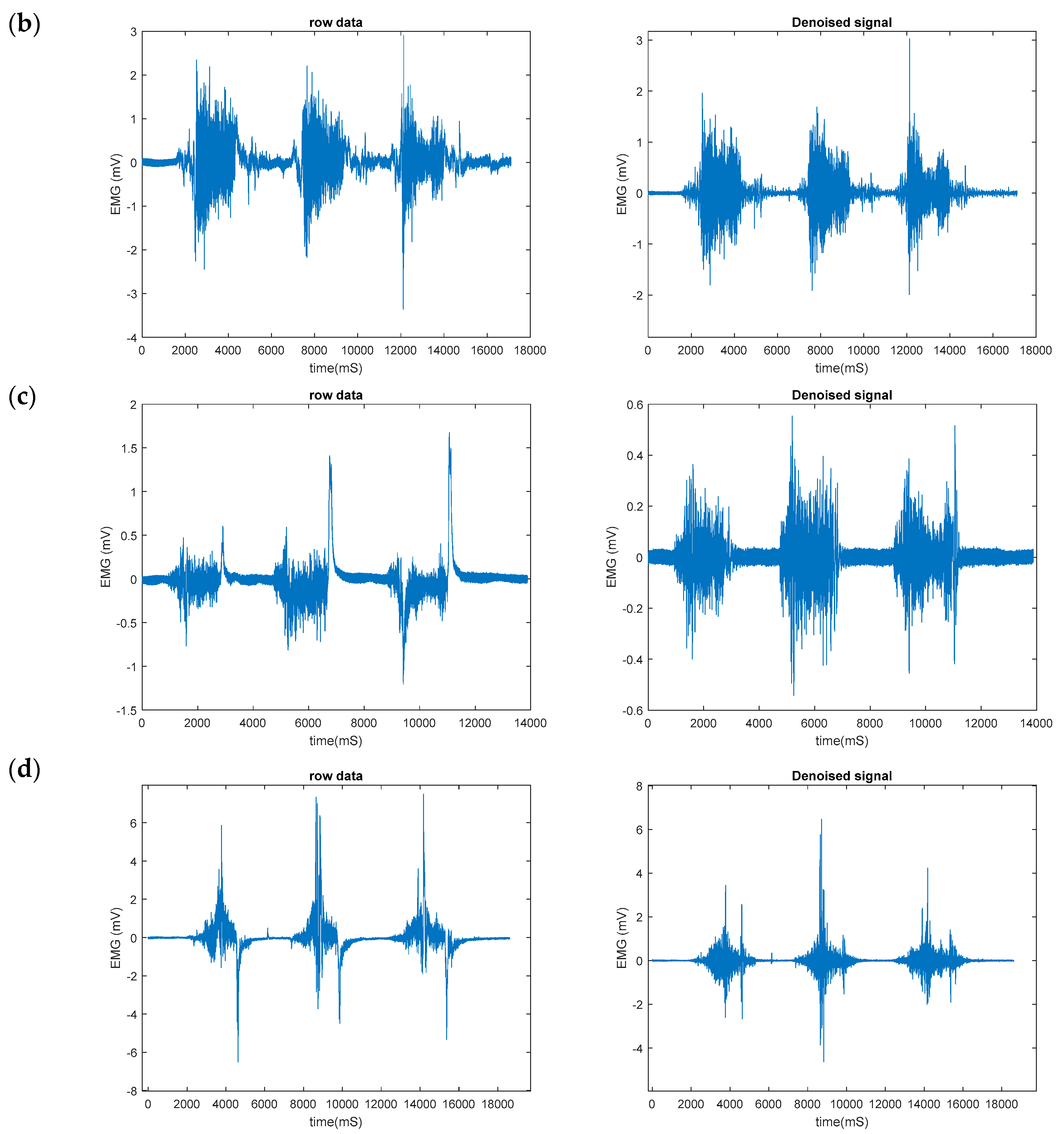
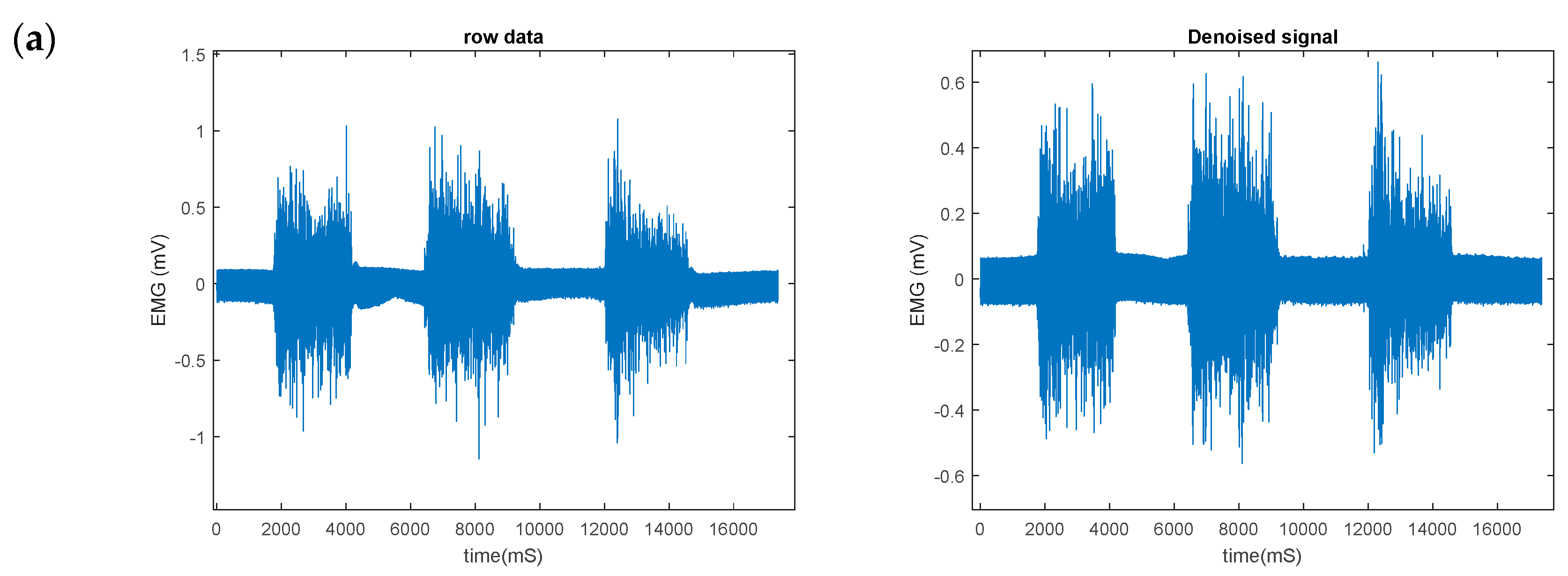
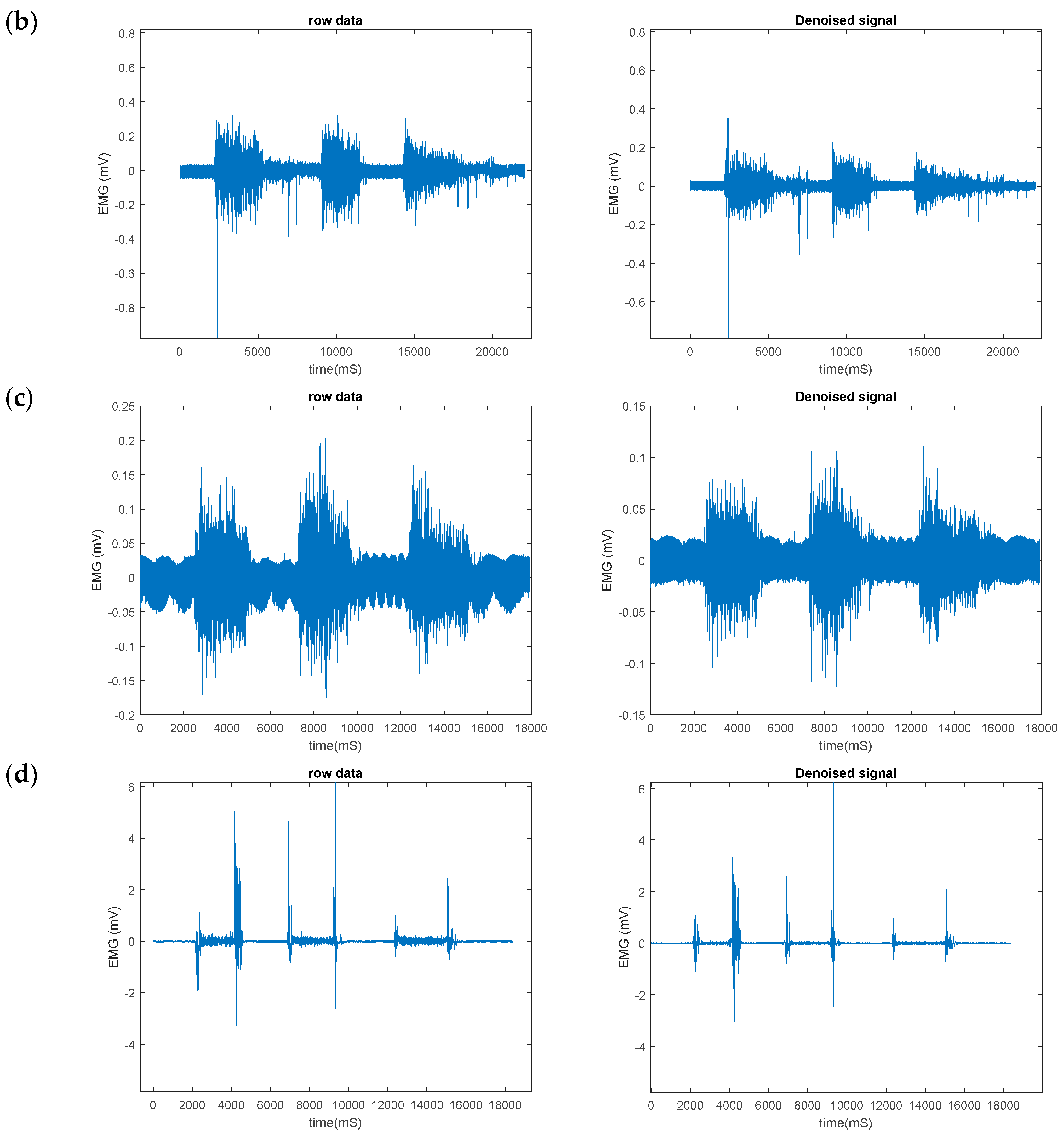
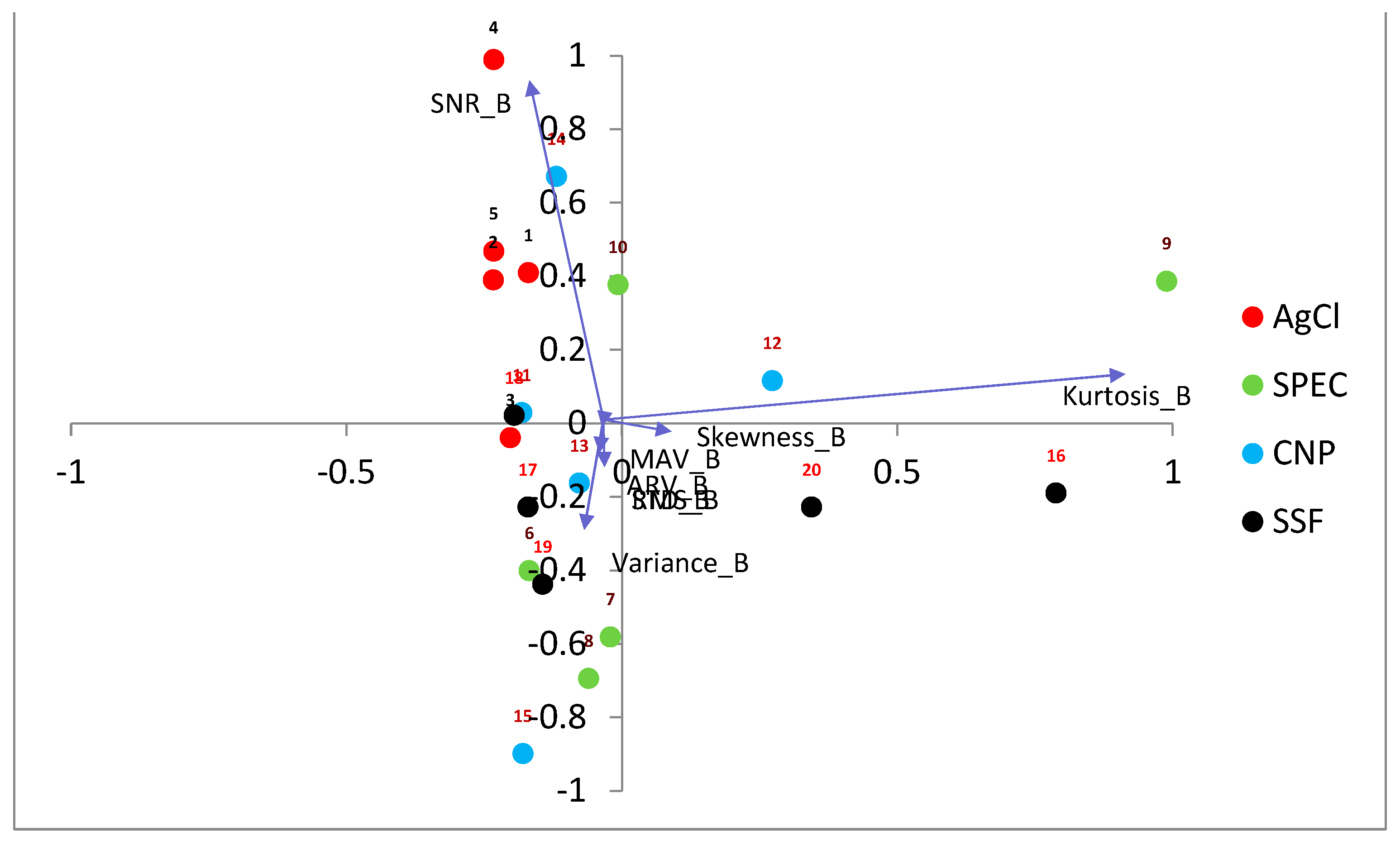
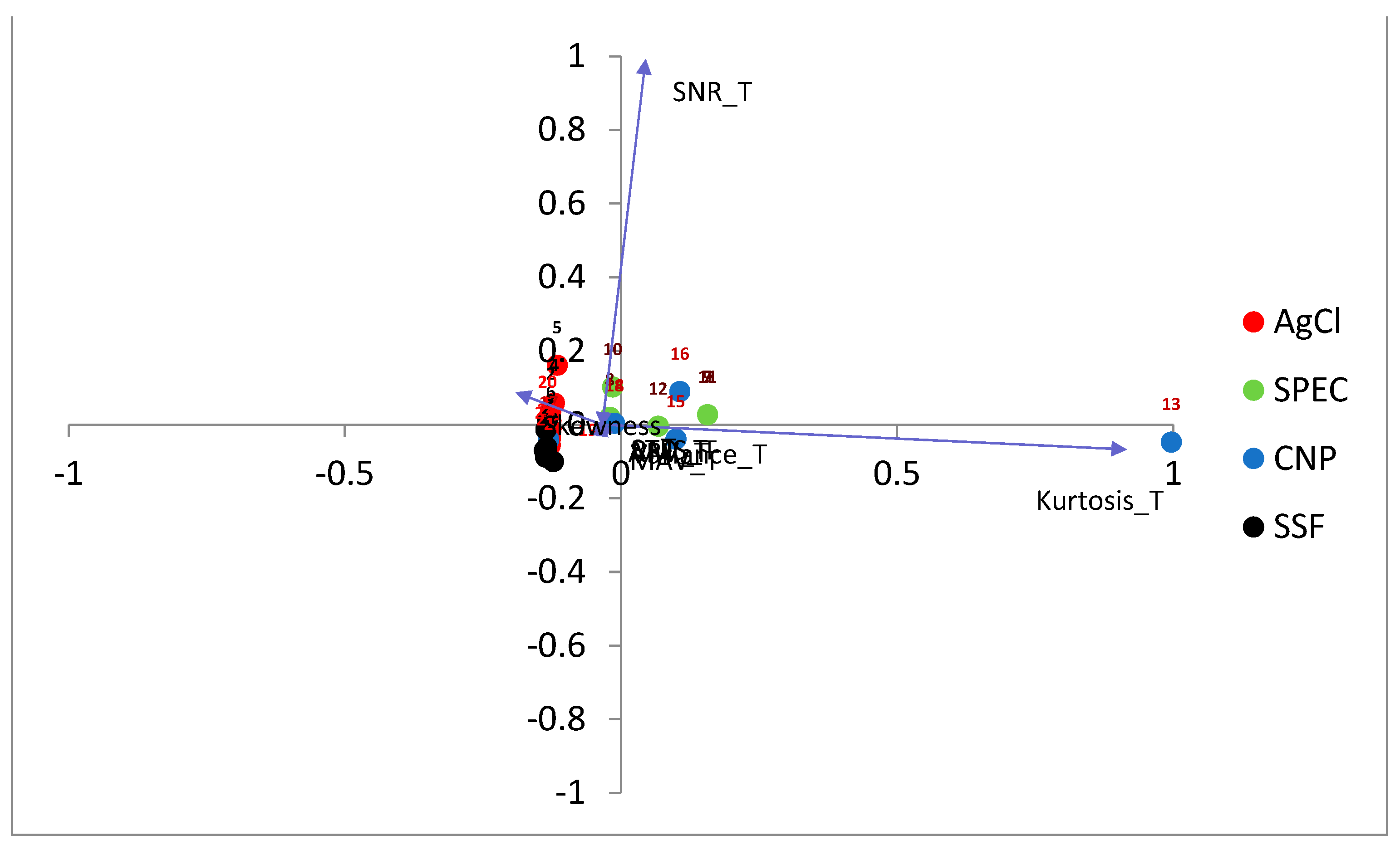
| Muscle Group | Load | SNR (dB) | %SNR | |||||
|---|---|---|---|---|---|---|---|---|
| Ag/AgCl | SSF | SPEC | CNP | SSF | SPEC | CNP | ||
| Biceps | No load | 17.72 | 15.55 | 13.3 | 24.38 | 87.75 | 75.056 | 137.58 |
| 2 kg | 28.92 | 26.53 | 26.19 | 29.98 | 91.73 | 90.56 | 103.66 | |
| 4 kg | 19.75 | 32.56 | 33.12 | 28.92 | 164.86 | 167.69 | 167.69 | |
| 6 kg | 31.61 | 49.77 | 25.36 | 60.87 | 157.45 | 80.22 | 192.56 | |
| Tibialis anterior | walking (3 mph) | 32.56 | 31.35 | 21.56 | 27.38 | 96.28 | 66.21 | 84.09 |
Disclaimer/Publisher’s Note: The statements, opinions and data contained in all publications are solely those of the individual author(s) and contributor(s) and not of MDPI and/or the editor(s). MDPI and/or the editor(s) disclaim responsibility for any injury to people or property resulting from any ideas, methods, instructions or products referred to in the content. |
© 2023 by the authors. Licensee MDPI, Basel, Switzerland. This article is an open access article distributed under the terms and conditions of the Creative Commons Attribution (CC BY) license (https://creativecommons.org/licenses/by/4.0/).
Share and Cite
Etana, B.B.; Malengier, B.; Krishnamoorthy, J.; Van Langenhove, L. Types of EMG Textile Electrodes: A Comparative Study Using PCA. Eng. Proc. 2023, 35, 6. https://doi.org/10.3390/IECB2023-14560
Etana BB, Malengier B, Krishnamoorthy J, Van Langenhove L. Types of EMG Textile Electrodes: A Comparative Study Using PCA. Engineering Proceedings. 2023; 35(1):6. https://doi.org/10.3390/IECB2023-14560
Chicago/Turabian StyleEtana, Bulcha Belay, Benny Malengier, Janarthanan Krishnamoorthy, and Lieva Van Langenhove. 2023. "Types of EMG Textile Electrodes: A Comparative Study Using PCA" Engineering Proceedings 35, no. 1: 6. https://doi.org/10.3390/IECB2023-14560
APA StyleEtana, B. B., Malengier, B., Krishnamoorthy, J., & Van Langenhove, L. (2023). Types of EMG Textile Electrodes: A Comparative Study Using PCA. Engineering Proceedings, 35(1), 6. https://doi.org/10.3390/IECB2023-14560








